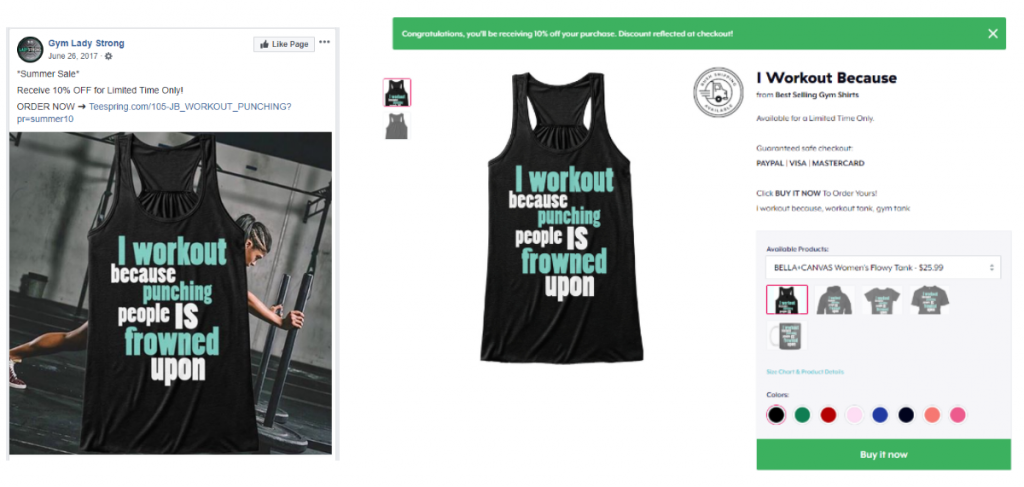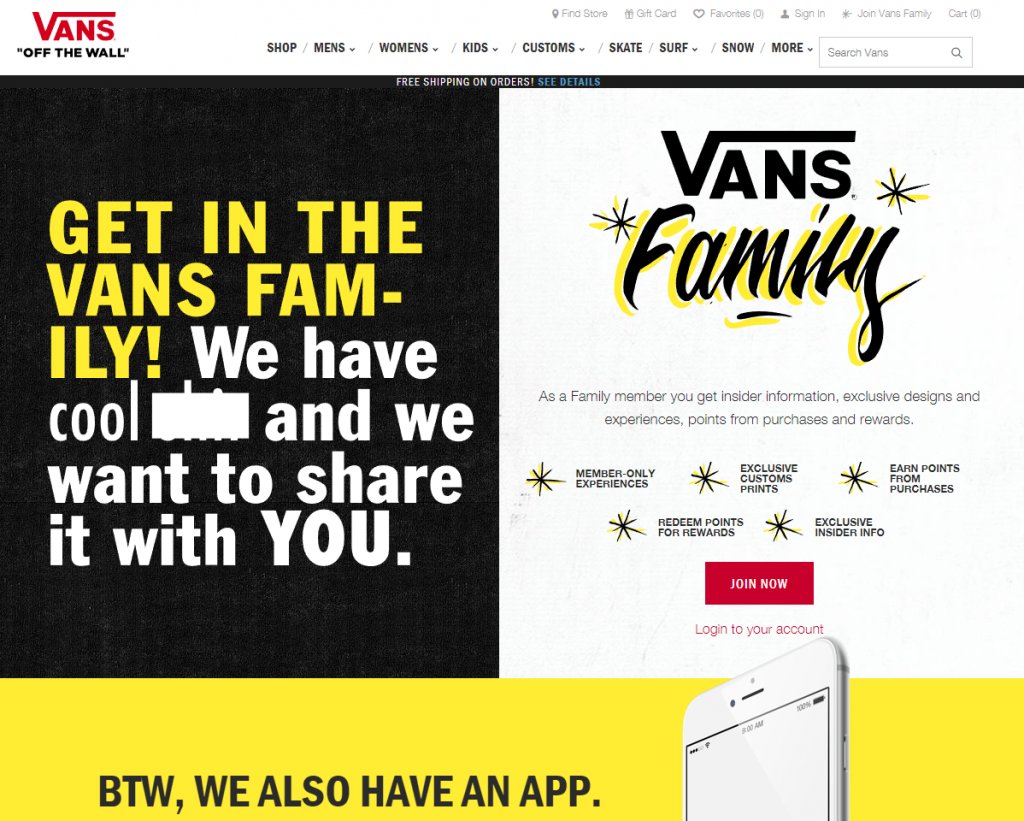The ABCs of selling: Always Be Closing. Blake in Glengarry Glen Ross had the right idea, but he probably couldn’t have predicted the rise of social media and its profound effect on this mantra.
Unless he could have.
For many businesses, their social media campaigns have the A and B, but not the C. They’re “always being” as every company maintains the requisite Facebook, Twitter, and Instagram profiles, but they’re not effectively leveraging the traffic they generate to convert (i.e., close) it into sales or even leads.
According to a recent analysis by Mary Meeker in her annual presentation on internet trends, 78% of millennials in the US discovered products (to purchase) via Facebook. Instagram and Pinterest both clocked in at 59%, and Twitter at 34%. It’s clear that if businesses want their eCommerce efforts to hit that coveted 18- to 34-year-old demographic, they need to use social media intelligently to drive conversions.
This is where great landing pages for social media come in.
A Refresher on the Power of Landing Pages
If your business engages in any level of eCommerce, you have a landing page (even if it’s just your homepage). It’s where you send visitors to start their shopping process, and the more specific and well-designed a landing page is, the higher the rate of converting the visitor into a lead or a sale. On the other hand, a poorly-designed landing page can turn away visitors quickly.
As an example of the latter, say you run a store that sells music accessories. From a post on Facebook touting a summer sale, you may send a visitor to a landing page such as this:
While this landing page contains the basic elements to advertise the summer sale (item categories, examples of savings in dollar amounts, sale end date, etc.), it doesn’t do a great job of funneling a visitor toward an actual conversion. It’s not visual, it’s poorly laid out and doesn’t connect back to where the user came from, namely the social media entry point.
If this company is lucky, it will see about a 2.35% conversion rate, which is the average for most landing pages one will encounter. However, great landing pages convert closer to 5%, so you can already see how many more leads you can capture with a quality landing page experience.
Furthermore, just having more landing pages, in general, can increase your leads. According to research out of Hubspot, companies see a 55% increase in leads when their landing page number goes from 10 to 15. That’s right—just five more!
If that doesn’t stress the importance of focusing on landing pages, you must already have more leads than you know what to do with.
Even today, most companies don’t utilize many landing pages with their social media efforts. Time and time again, you’ll see businesses simply linking to their homepage (if at all).
You can do better.
The 1-2 Punch of Social Media Landing Page Strategies
There are two parts to consider when implementing a better landing page strategy:
- The point of entry
- The landing page itself
The point of entry is, of course, the social media post itself. The companies that leverage social media most successfully always have a thoughtfully-planned campaign.
Here’s a J.Crew case study on TrackMaven that highlights how effective their strategy has been. The entire post is a great primer on tactics, but here’s the cherry:
The goal for your eCommerce business isn’t simply to have potential customers spend time on your social platforms; it’s to direct those engaged customers to specific landing pages that will help convert engagement into action. That’s why planned campaigns are so important.
Here’s a quick example scenario of a social campaign with landing pages in mind:
- A Facebook post about a Summer Sale Blowout with 10 images of your discounted products.
- Each one of those images is technically an individual post. Thus, each accompanying blurb contains a link to the singular Summer Sale Blowout landing page.
- The visitor arrives on a thought-out landing page that shows the product images again, explains the sale, and has a call-to-action (CTA) of “Start Shopping Now!”
And this leads us to the second punch: the landing pages themselves. While there are many ways to best optimize your landing pages for every situation, there are some basics elements to keep in mind. You’ve already seen an example of a poor landing page above. Let’s look at a much more thoughtful example from J.Crew.
First, let’s start with their Instagram feed:
Clicking the link in their profile goes to this landing page:
No, the image wasn’t duplicated by accident; J.Crew’s landing page deliberately mimics its Instagram page. In essence, J.Crew has built a shopping experience on their landing page that’s a direct extension of their social media efforts. A fan likes an item on Instagram? That item is literally in the same position on the subsequent landing page. It’s simple and brilliant.
To be clear, J.Crew is a giant company that understands how their followers see and interact with their brand. While it may be difficult for smaller businesses to follow suit, there are ways to make sure that the social language is embedded into your landing pages for higher conversion rates.
Putting the “Social” into Your Landing Pages
Again, the perfect landing page for your social campaign should be an extension of a strategic marketing plan for a specific social channel. That being said, there are general best practices to make your landing pages perform better:
- Echo your social post’s language. The language (and images) you use on Facebook should match the corresponding landing page. This provides a natural, understandable chain of events where the visitor’s expectations are met. In the example below, note the “10% off” deal is immediately reinforced at the top of the landing page:
- Reinforce social proof. Keep in mind that your audience came from a social platform, so they are primed to take in reviews, ratings, testimonials and item popularity. Remember the OkCupid landing page that had a counter on it showing close to 8 million members? That’s a type of social proof, though in the case of a dating site member testimonials may have a larger impact on swaying a visitor to sign up.
- Keep it fun. Although you want to collect leads and move products, social media should still be an inherently fun place to be. Brands that can continue that fun onto their landing page will see more engagement and better results. Vans on Instagram currently links to this socially-focused and fun landing page:
In summary, landing pages for your social media campaigns can drastically improve engagement, leads and sales. Keep in mind that with landing page conversions so low across the industry overall, even a boost of a couple of percent can leapfrog you over your competition. Add that to the fact of increasing leads by 55% simply by having over 10 landing pages, and you can see how putting a little effort into building them can equate to huge results.
—
Guest post by Shogun.
Need an easy and inexpensive way to build multiple landing pages for your campaigns? Shogun has you covered with our powerful drag-and-drop visual editor, page templates, responsive design elements, and more.

Robert Woo is heavy into technology, eCommerce, and affiliate marketing. If it's digital marketing of some sort, there's a big chance he'll be writing about it.
Recommended articles
 Facebook Ads for eCommerce: 16 Strategies, Examples & Tips
Facebook Ads for eCommerce: 16 Strategies, Examples & Tips
 How to Build a Winning eCommerce Ads Strategy
How to Build a Winning eCommerce Ads Strategy
 Google Ads for eCommerce: Everything You Need to Know
Google Ads for eCommerce: Everything You Need to Know
 10X Your Traffic with PPC Management Software
10X Your Traffic with PPC Management Software
Comments
Powered by Facebook Comments









